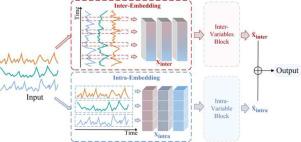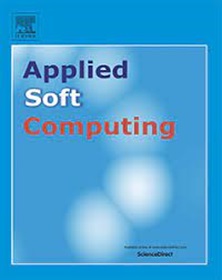Bi-Branching Feature Interaction Representation Learning for Multivariate Time Series
IF 7.2
1区 计算机科学
Q1 COMPUTER SCIENCE, ARTIFICIAL INTELLIGENCE
引用次数: 0
Abstract
Representational learning of time series plays a crucial role in various fields. However, existing time-series models do not perform well in representation learning. These models usually focus only on the relationship between variables at the same timestamp or only consider the change of individual variables in time, while failing to effectively integrate the two, which limits their ability to capture complex time dependencies and multivariate interactions. We propose a Bi-Branching Feature Interaction Representation Learning for Multivariate Time Series (Bi-FI) to address these issues. Specifically, we elaborated a frequency domain analysis branch to address the complex associations between variables that are difficult to visualize in the time domain. In addition, to eliminate the time lag effect, another branch employs the mechanism of variable tokenization for attention to learning intra-variable representations. Ultimately, we interactively fuse the features learned from the two branches to obtain a more comprehensive time series representation. Bi-FI performs well in three time series analysis tasks: long sequence prediction, classification, and anomaly detection. Our code and dataset will be available at https://github.com/wwy8/Bi_FI.

多变量时间序列的双分支特征交互表征学习
时间序列的表征学习在各个领域都起着至关重要的作用。然而,现有的时间序列模型在表征学习方面表现不佳。这些模型通常只关注同一时间戳下变量之间的关系,或者只考虑单个变量在时间上的变化,而不能有效地将两者结合起来,这限制了它们捕捉复杂的时间依赖关系和多变量交互的能力。为了解决这些问题,我们提出了多变量时间序列的双分支特征交互表征学习(Bi-FI)。具体来说,我们精心设计了一个频域分析分支,以解决难以在时域中可视化的变量之间的复杂关联。此外,为了消除时滞效应,另一个分支采用了变量标记化机制,以关注变量内部表征的学习。最终,我们将两个分支学习到的特征进行交互融合,以获得更全面的时间序列表示。Bi-FI 在三个时间序列分析任务中表现出色:长序列预测、分类和异常检测。我们的代码和数据集将发布在 https://github.com/wwy8/Bi_FI 网站上。
本文章由计算机程序翻译,如有差异,请以英文原文为准。
求助全文
约1分钟内获得全文
求助全文
来源期刊

Applied Soft Computing
工程技术-计算机:跨学科应用
CiteScore
15.80
自引率
6.90%
发文量
874
审稿时长
10.9 months
期刊介绍:
Applied Soft Computing is an international journal promoting an integrated view of soft computing to solve real life problems.The focus is to publish the highest quality research in application and convergence of the areas of Fuzzy Logic, Neural Networks, Evolutionary Computing, Rough Sets and other similar techniques to address real world complexities.
Applied Soft Computing is a rolling publication: articles are published as soon as the editor-in-chief has accepted them. Therefore, the web site will continuously be updated with new articles and the publication time will be short.
 求助内容:
求助内容: 应助结果提醒方式:
应助结果提醒方式:


